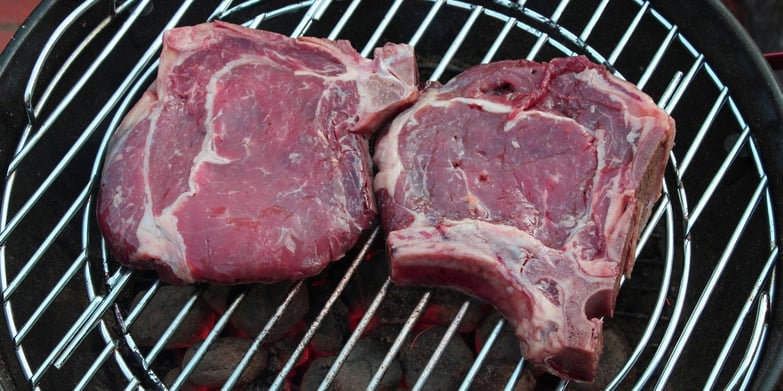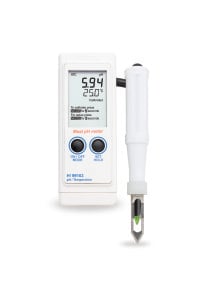
Approximately 30 million cattle are raised, slaughtered, and consumed each year in the United States. The conditions during meat processing directly affect the quality of the final beef product; visual and nonvisual cues for quality include juiciness, tenderness, taste, color, and drip loss. In order to maximize meat quality, both the pH and temperature of the carcass must be monitored during processing; neglect will result in processing conditions called cold shortening and heat toughening.
Cold shortening occurs when the carcass is at a pH greater than or equal to pH 6 while at temperatures equal to or less than 15°C (59°F). Heat toughening occurs when the carcass reaches a pH of 6 or lower at temperatures greater than 35°C (95°F). As part of the postmortem physiological breakdown, rigor mortis occurs once the carcass pH decreases to pH 6.
Essential for the conversion of muscle to meat, rigor mortis toughens the muscle and eliminates muscle extensibility. Muscles attempt to contract, or shorten prior to rigor mortis; both cold shortening and heat toughening will result in an increase in shortening of muscles, leading to an excessive and undesirable toughening of the meat. Conditions at rigor dictate the carcass temperature should fall between 15 and 20°C (59 and 68°F) to minimize shortening and optimize tenderness. Glycolysis, another physiological process that occurs postmortem, converts glycogen to lactic acid; the formation and accumulation of lactic acid postmortem reduces the pH of the carcass, permitting rigor mortis to begin. During rigor mortis it is imperative the carcass pH be below pH 6, but above pH 5.2 in order to prevent adverse effects on meat juiciness.
Various steps can be taken to control both the pH and temperature to maximize quality. Stress and excessive exercise prior to slaughter, as well as electrical inputs during dressing should be minimized as much as possible to reduce muscle temperatures and prevent excessive lactic acid formation. Administering an ice rinse to the carcass will also assist in decreasing muscle temperatures.
A meat processing plant was looking to update their portable pH meter that they were using to perform pH spot checks on meat carcasses. Hanna Instruments recommended the Portable Meat pH Meter - HI99163 which included with the Foodcare pH Electrode for Meat Products - FC232D. The specialized electrode has a viscolene reference and a non-toxic PVDF body, eliminating any worry of food contamination. The open junction design of the electrode assists in prevention of junction clogging, thereby maintaining efficient and fast measurements.
The built-in temperature sensor makes for convenient temperature-compensated pH measurements from -5.0 to 105.0°C (23 to 221°F). The customer was grateful for the easy two-button operation and on screen tutorial for calibration and setup. In order to maintain accuracy, the Hanna Instruments Sales Representative conveyed the importance of frequent electrode cleanings and included the HI70630 Acid Cleaning Solution for Meat, Grease, and Fats. Overall, the customer was extremely satisfied with both the Hanna products and sales representative’s knowledge on the application.

Written by Hanna Instruments
At Hanna Instruments, we strive to create testing equipment that is easy-to-use, accurate, and readily available. From design to completion, we manufacture a wide array of testing equipment for various industries and applications. No matter if you're in the lab or out in the field, we have just what you need to test. We value our customers and work with you every step of the way to ensure your testing success. That's our driving force, it's who we are.
That's why we've dedicated our blog as a helpful resource for you to use! Catch up on the latest products, explore industry trends, discover testing tips, learn how to improve results, and more. Got questions? Email sales@hannainst.com.

